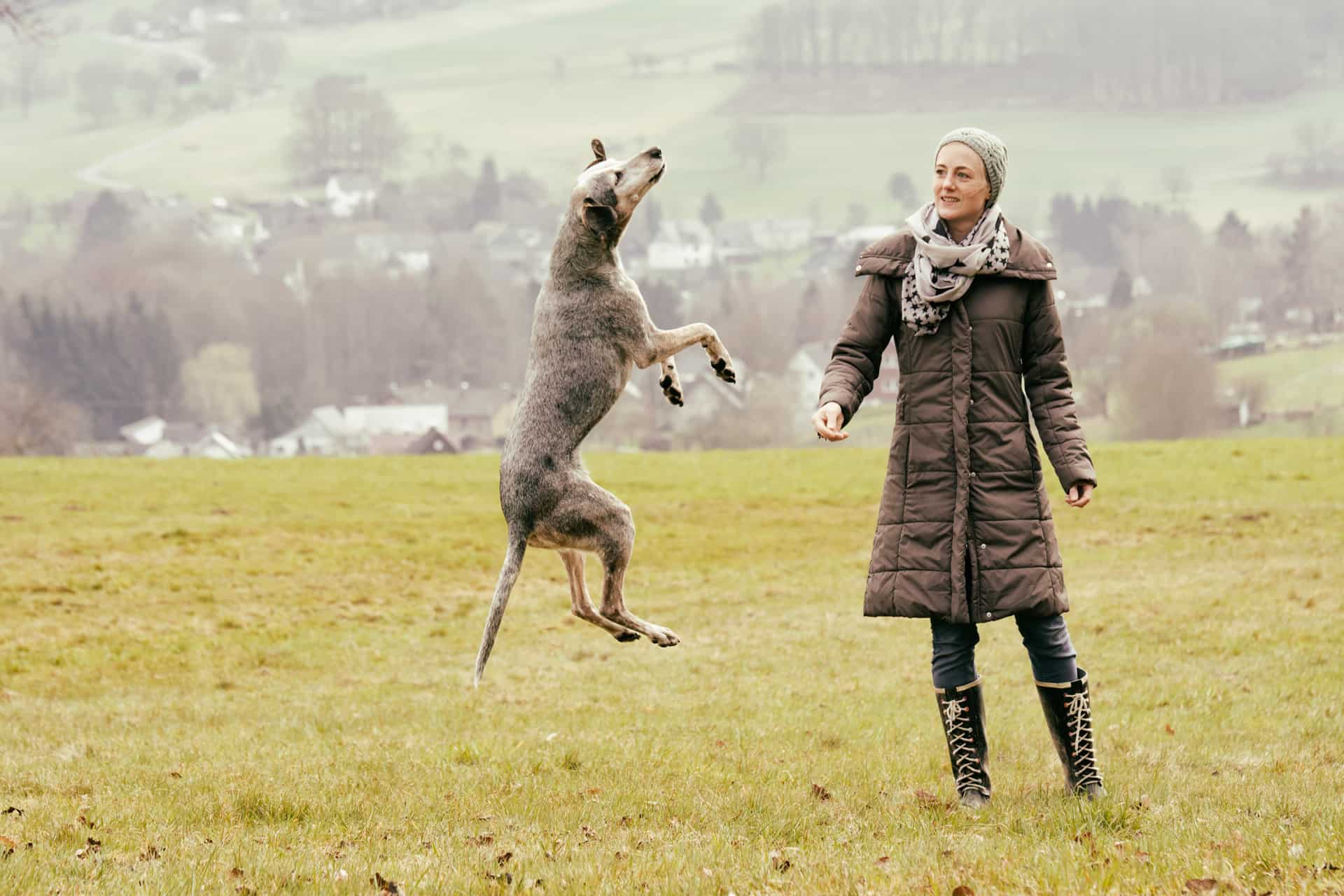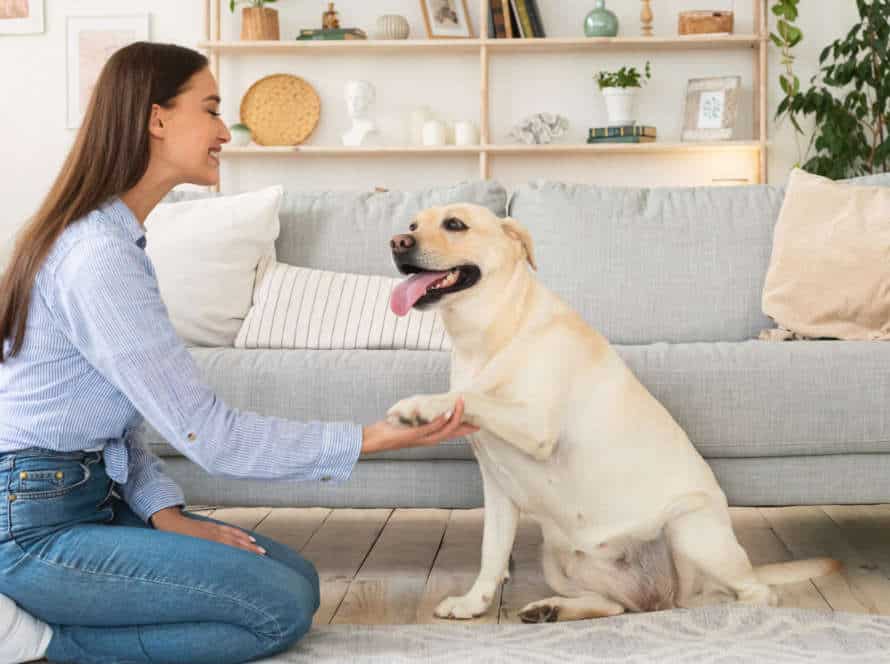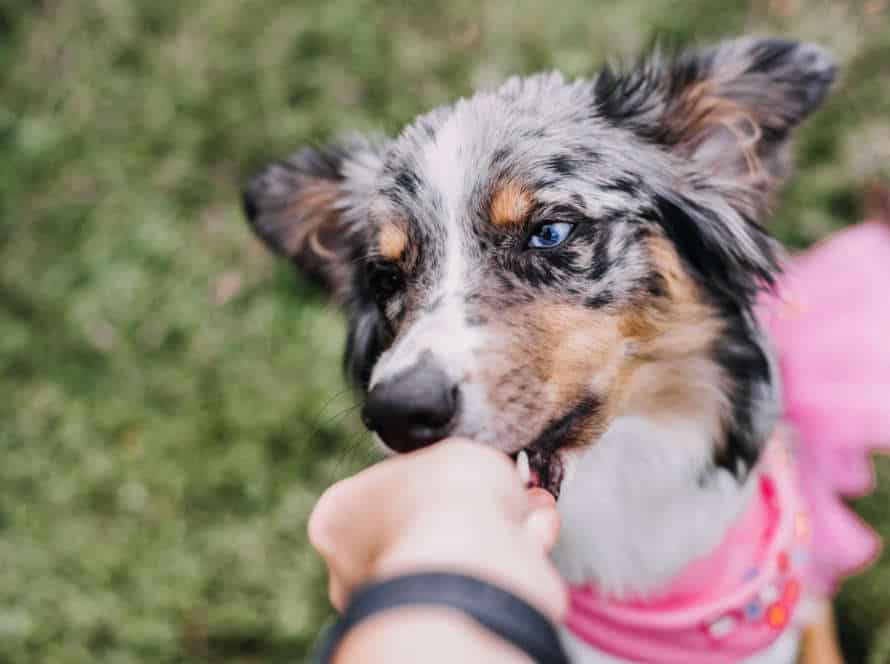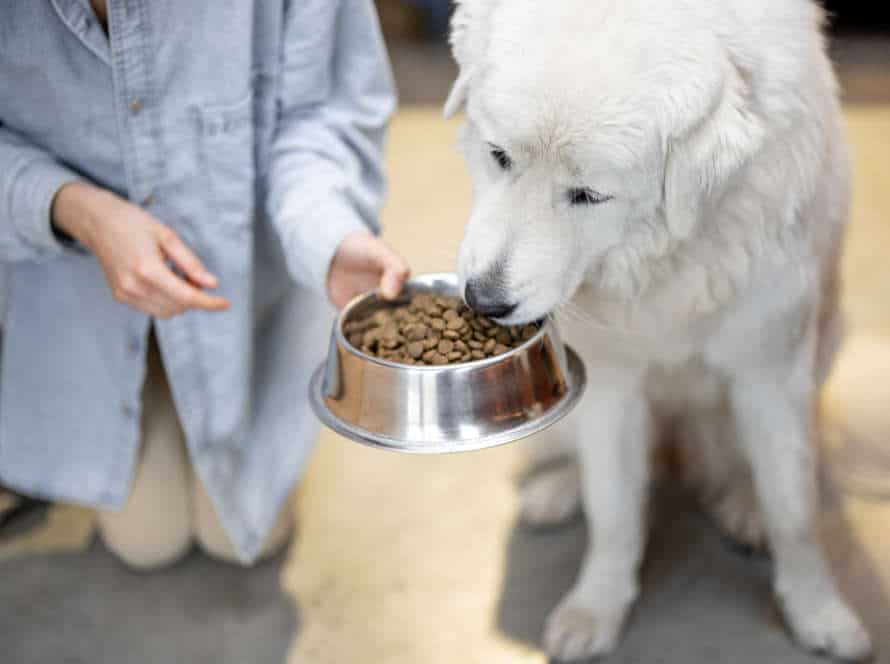Engaging Exercise Ideas for Your Adult Dog
It’s super vital to get your pup exercising regularly for their physical and mental health. Here’s a few fun and exciting activities to get your pooch up and about!
- Fetch: A classic game that’ll get your pup movin’ and reinforce good behavior.
- Hikes: Take your pup outside and explore the great outdoors with them. Bonding and exercising in one!
- Agility: Set up an obstacle course in your yard and show your pup how to do it. Both physically and mentally stimulating.
- Tug of War: Build their strength and endurance while reinforcing positive behavior.
- Swimming: If they love water, let them take a dip! It’s a great way to exercise and bond.
Remember to always supervise your pup during exercise so they don’t overdo it!
Indoor Exercise Ideas
Exercise is a must for adult dogs. But, with the current climate, some outdoor activities may not be possible. To keep your doggy active, here are some fun indoor exercise ideas! These will keep you and your pup entertained and fit.
Puzzle and treat-dispensing toys
Delight your adult pup with stimulating puzzle and treat-dispensing toys. They’re the perfect indoor exercise tools to challenge their problem-solving skills and give them a physical workout. Here’s what to try:
- KONG Classic Toy: Durable rubber toy to fill with treats or peanut butter. Keeps your pup occupied for ages.
- Outward Hound Hide-A-Squirrel Puzzle Toy: Plush tree trunk hiding squirrels. Teaches your pup how to remove the squirrels.
- Nina Ottosson Dog Tornado Puzzle Toy: Rotating puzzle with treat compartments. Your pup must spin the toy to uncover the treats.
- Tug-A-Jug: Jug-shaped clear plastic toy with rope handle and rubber stopper. Dispenses treats as your pup plays.
Hide and seek games
Fun and engaging indoor exercise for your adult pup? Hide and seek! Mental stimulation and physical activity–all at once! Here are a few ways to play:
- Treats: Hide pup’s favorite treat somewhere in the room. Let them use their nose to find it.
- Toys: Hide pup’s favorite toy behind furniture, under blankets or pillows.
- Person: Have someone hold pup while you hide in another room. Call out their name so they can find you.
Hide and seek helps pup expend energy, prevents boredom, and provides mental stimulation. Pro tip: Use treats or toys with a strong scent for a better hiding experience.
Indoor agility courses
Indoor agility courses are an exciting and enjoyable way to give your adult dog a workout and help them with their physical and mental agility. Here are a few ideas for setting up your indoor dog agility course:
- Use common household items like chairs, blankets and boxes to make obstacles.
- Construct a tunnel for your pup to crawl through using a large cardboard box or a children’s play tunnel.
- Create a weave pole area with a few chairs and PVC piping or string.
- Set-up a jumping area using a broomstick or paint pole across two chairs.
- Treats, commands and positive reinforcement can be used to train your dog and help them to do the course.
Pro tip – Begin with simple obstacles and gradually make them more difficult as your dog gets better. This will stop frustration and make sure your dog loves exercising indoors.
Outdoor Exercise Ideas
Exercising your canine friend is essential for their wellbeing. Outdoor activities can include playing fetch, taking hikes, and swimming. With correct training and the right gear, adult dogs can have a blast getting active outdoors. Let’s take a look at some of the exciting activities for adult dogs.
Walking and Hiking
Walking and hiking are two great outdoor exercise options for adult dogs. They provide mental and physical stimulation.
Walking: Low-impact, regular walking is good for your dog. It keeps them fit, builds muscle and helps keep their weight healthy. Plus, it’s a great way to socialize with other dogs and people.
Hiking: This is a more challenging activity. It burns more calories and builds endurance with different terrains and smells. Make sure to pick dog-friendly trails, keep them hydrated and wear protective booties on their paws.
Before any exercise, get advice from your vet. They’ll assess your dog’s condition and suggest the right intensity and frequency of exercise.
Fetch and Frisbee games
Fetch and Frisbee, not only fun and entertaining, provide great exercise for your adult dog. These classic activities keep your furry friend physically fit and mentally stimulated, enhancing their wellbeing.
Start by finding a wide open space, with a clear path for your dog to run. Then toss the ball, stick or toy, encouraging your pup to bring it back. Use an appropriate toy for size and chewing habits.
Frisbee games need a bigger and wider space. Throw the frisbee close to the ground and increase the height and distance as your dog gets better. Supervise them, throw the frisbee carefully and not too hard.
These games are excellent sources of outdoor exercise that keep your furry friend active and healthy. So, grab a toy and head outside for quality time with your pup!
Swimming and Water Games
Swimming and water games are a fun and engaging way to exercise your adult pup outdoors. Not only does it cool them off, but it also builds strength and endurance for them.
Swim Time:If your doggo loves the water, swimming can help them burn calories and work muscles. Plus, it’s a low-impact activity, perfect for pups with joint issues.
Water Fetch: Throw a ball or toy in the water and let them fetch it! This exercise has the added bonus of teaching them swimming skills and boosting their confidence.
Pro Tip: Always watch your pup while they’re in water and get a life jacket if they don’t swim well.
Physical and Mental Exercise Ideas
Exercising your adult dog is essential! Not only for their physical health, but also for their mental wellbeing.
Physical exercise works off extra energy, supports a healthy weight, and builds strong bones.
Mental exercises keep your pup’s brain busy, so they don’t get bored. Here are some ideas for fun adult dog exercises:
Obedience training and commands
Obedience training and commands are major for your pup’s growth and wellbeing. Not only do they secure safety, but they also build a stronger connection between you and your furry buddy.
Here are some physical and mental activities you can add to your pup’s obedience training program:
- Basic orders like sit, stay, come, and heel can be done indoors and outdoors.
- Agility training: set up hindrances like tunnels, cones or jumps to keep your pup physically and mentally excited during exercise.
- Socialization: take your pup to dog parks or on group strolls to improve its social abilities and lessen anxiety around other pooches.
- Mental stimulation: involve your pup with intellectually stimulating toys, treat puzzles or hide-and-seek games to keep dullness away while improving their cognitive abilities.
- Leash training: this exercise is vital, from teaching your pup how to properly walk on a leash to teaching them how to stay quiet in certain circumstances.
Pro Tip: It’s essential to be consistent with training and to use positive reinforcement techniques, such as compliments, treats, and playtime, to motivate good behavior in your pup.
Nose work and scent-based games
Nose work and scent-based games are top-notch for keeping your pup both physically and mentally fit. What’s more, they can be an entertaining way to bond with your furry friend! Here are some fun activities to try:
- Hide-and-Seek: Plant small treats or toys around the house or backyard. Let your pup search out the goodies using their nose.
- Scent Trails: Place pieces of treats on the ground, and have your dog trace the trail to reach the ultimate reward.
- Name that Scent: Get your pup acquainted with new smells like cinnamon or fruit. See if they can recognize the scent by name.
- Treat Dispenser Toys: Utilize treat dispensing toys to teach your dog. This toy helps their problem-solving skills by figuring out how to get the treat out.
- Towel Game: Hide a favorite toy under a towel. Let your pup sniff out which one has the toy underneath.
Pro tip: Make sure the games are tough enough to be stimulating, but not too tough for your pup to win. These games will not only give them a mental workout, but they can also help train your pup for more difficult tasks.
Interactive play with other dogs
Interactive play with other dogs is a great way to keep adult pooches fit and smart. Here are some ideas to try:
- Play Tug-of-War. Build strength and have fun with a long, durable rope or toy for this game.
- Avoid injury.
- Go to the park. Let them sniff new smells and run around. Supervise to ensure safety.
- Try Agility Training. Navigate an obstacle course for physical and mental stimulation. Set up in your yard or take classes at a local facility.
- Hide and Seek. Engage their sense of smell and mental agility. Hide treats or toys and let them find them.
- Alleviate boredom and loneliness. Improve socialization skills with interactive play.
Pro Tip: Supervise and give water breaks. Avoid dehydration!
Exercise Safety Tips
Exercise for adult pooches is vital for their wellness, both physically and mentally. Yet, just like any activity, exercising your adult dog also has safety measures. Here, we’ll check out some safety advice for exercise that all pup owners should obey.
Be aware of weather conditions
It’s key to be aware of weather when exercising your adult dog. Here are tips and ideas:
- Hot days: Walk early or late. Bring water. Stop and rest in the shade.
- Cold days: Put booties or wax on paws. Stay on paths. Avoid ice.
- Exercise ideas: Fetch, tug-of-war, swimming, obstacle course. Change it up for stimulation and fitness.
- Pro tip: Ask your vet before starting a routine. Especially if health conditions exist.
Monitor your dog’s energy levels
Monitor your pup’s energy for their health and safety during exercise. Here’s what you need to know:
- Start slow.
- Increase intensity and duration gradually.
- Monitor energy levels throughout exercise.
- Take breaks if needed.
- Signs of fatigue/overheating: panting, slowing, reluctance. Stop activity+provide water/rest if seen.
- Engaging exercise ideas: fetch, running/jogging, hiking, swimming, agility. Match energy level+provide variety.
- Safety in mind, regular exercise can improve pup’s health, stimulate mentally, and strengthen bond.
- Pro Tip: Consult vet before starting new exercise routine.
Bring water and rest periods for hot weather
When it’s hot, it’s important to bring lots of water and rest periods for your dog while exercising to avoid heat exhaustion or heatstroke. Fun, safe exercises can keep your adult pup healthy and alert. Here are some safety tips and ideas:
- Ensure your pup has access to cold, clean water while and after exercising.
- Don’t exercise your pup during the hottest hours; like 10am-4pm.
- Provide your pup with shady spots to rest and cool down.
- Have your pup splash around in water for a fun workout.
- Take your pup for a walk when it’s cooler; early morning or late evening.
- Play fetch or tug-of-war in a shaded, grassy area.
Pro tip: Always supervise your pup during exercise and watch for signs of overheating like heavy panting, drooling, or being sluggish.
Understanding Your Dog’s Exercise Needs
Exercise is a must for adult dogs if they want to be healthy and content. It helps them stay mentally and physically alert, and their bodies in top shape. Knowing your pup’s exercise needs is vital for giving them an enjoyable and satisfying activity routine. Here, we’ll look at some of the best exercise ideas for adult canines.
Taking into account breed and size
It’s key to understand your pup’s exercise needs. Taking into account size and breed is vital for knowing how much exercise and what kind of activities are best for them. Here are tips to help you:
- Check breed- herding and sport breeds need more exercise than toy breeds.
- Take size into account- bigger breeds need more exercise than smaller ones but don’t overdo it.
- Do activities they love- fetch, a hike or jog, or swimming are all great ways to give your pup exercise and fun.
- Start slow & increase intensity gradually- this will stop them from getting hurt or uncomfortable.
Pro tip: Regular exercise can help stop certain health issues, add to their lifespan and strengthen the bond between you and your pup!
Considering your dog’s age and health
Planning your pooch’s exercise routine? It is essential to consider their age and health. Puppies and elderly pups, for instance, need a different type and amount of exercise when compared to adult dogs. Their energy levels and physical needs are different.
Adult dogs require exercise to keep them healthy and mentally stimulated. Try long walks or hikes, fetch, tug of war, agility games, interactive toys or puzzles, and swimming. Remember your dog’s breed and behavior while selecting the right activity.
Adapting exercises to fit your dog’s preferences
Humans and dogs have different exercise likes. Adapting exercise to suit your pup’s preferences is key for a helpful, lasting routine. Here are tips:
- See what your dog loves – running, fetching?
- Fit exercise to include their faves. Love fetch? Try a frisbee, ball, or stick.
- Stimulate their minds with hidden treats they need to sniff out.
- Think about your pup’s age, breed, and health to adjust intensity and duration.
- Chat with your vet before starting any new routine.
Frequently Asked Questions
Q: What are some engaging exercise ideas for my adult dog?
A: There are many engaging exercise ideas for your adult dog, including playing fetch, going for a hike, running, agility training, swimming, and playing with puzzle toys.
Q: How much exercise does my adult dog need?
A: The amount of exercise your adult dog needs will depend on their breed, age, and overall health. As a general rule, most adult dogs need at least 30 minutes to one hour of exercise per day.
Q: What are some benefits of exercising my adult dog?
A: Exercising your adult dog can have many benefits, including improving their physical health, reducing the risk of obesity and other health issues, improving their mental stimulation, reducing anxiety and stress, and strengthening your bond with your pet.
Q: How do I know if my adult dog is getting enough exercise?
A: Signs that your adult dog may not be getting enough exercise include excessive barking or destructive behavior, weight gain or lethargy, and a lack of interest in playtime or training.
Q: How do I create a safe exercise routine for my adult dog?
A: To create a safe exercise routine for your adult dog, start with a visit to the vet to ensure they are physically healthy and able to engage in exercise. Choose activities that are appropriate for your dog’s breed and age, and always supervise them during exercise to prevent injury or accidents.
Q: How can I make exercise more fun for my adult dog?
A: You can make exercise more fun for your adult dog by introducing new activities, using interactive toys or puzzle games, and rewarding good behavior during exercise with praise or treats. You can also make exercise a social event by inviting other dog owners and their pets to join in.







